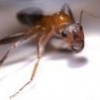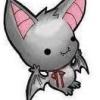I took a short walk up in Wildwood Cyn today, which is right here in Burbank. I was disappointed to see Argies everywhere I went, but as dusk started to settle in I came across a colony that was swarming. It was exciting to see some reproductives finally this year. I think all I saw were males, but hard to tell in the light. I took video and will eventually post to my SkyDrive share below.
- Formiculture.com
- Forums
- Gallery
- Members
- Member Map
- Chat
















